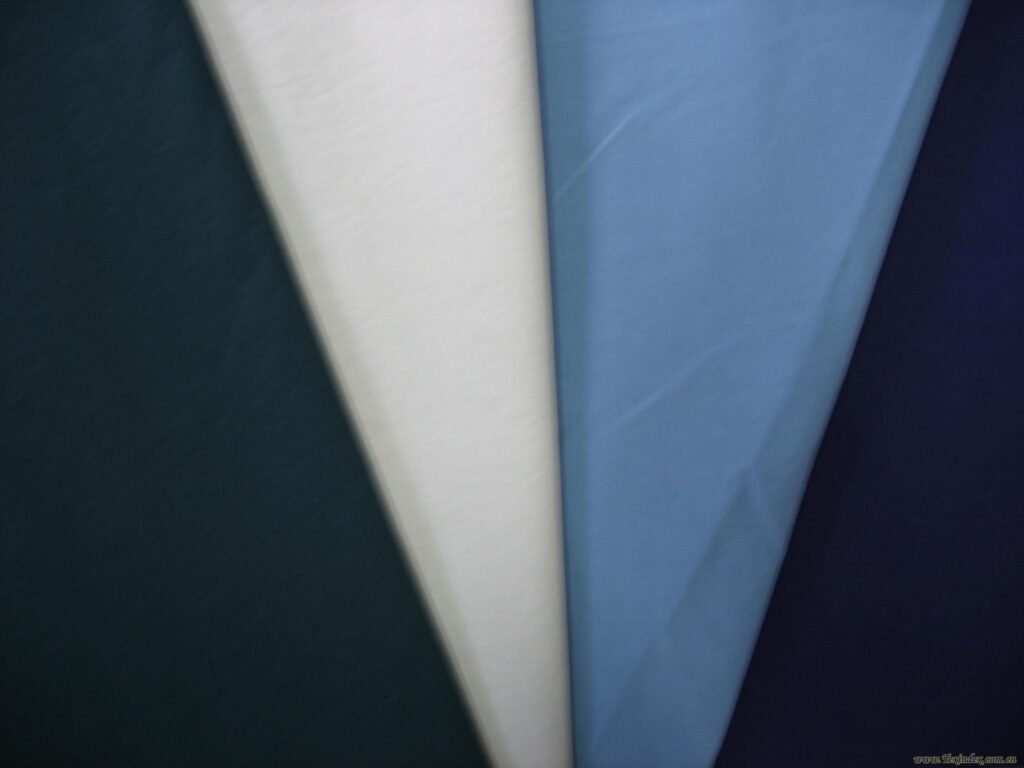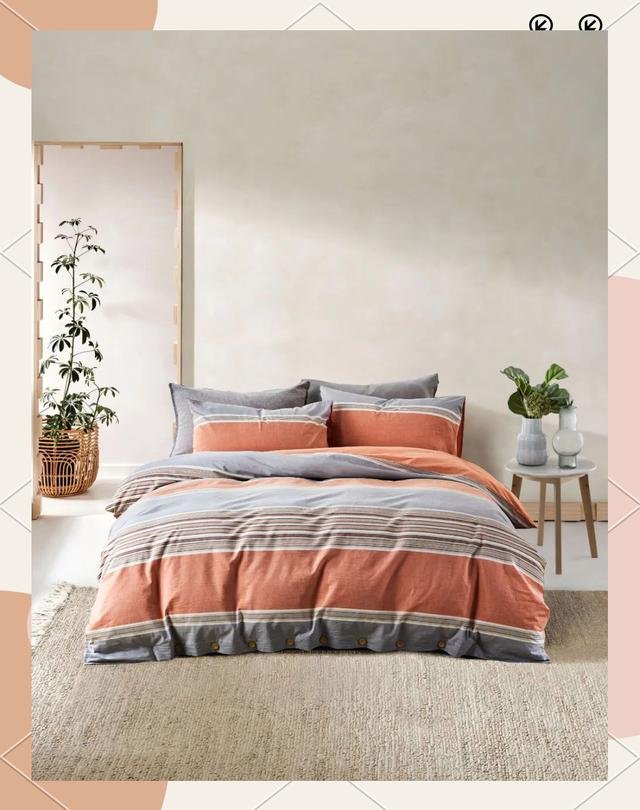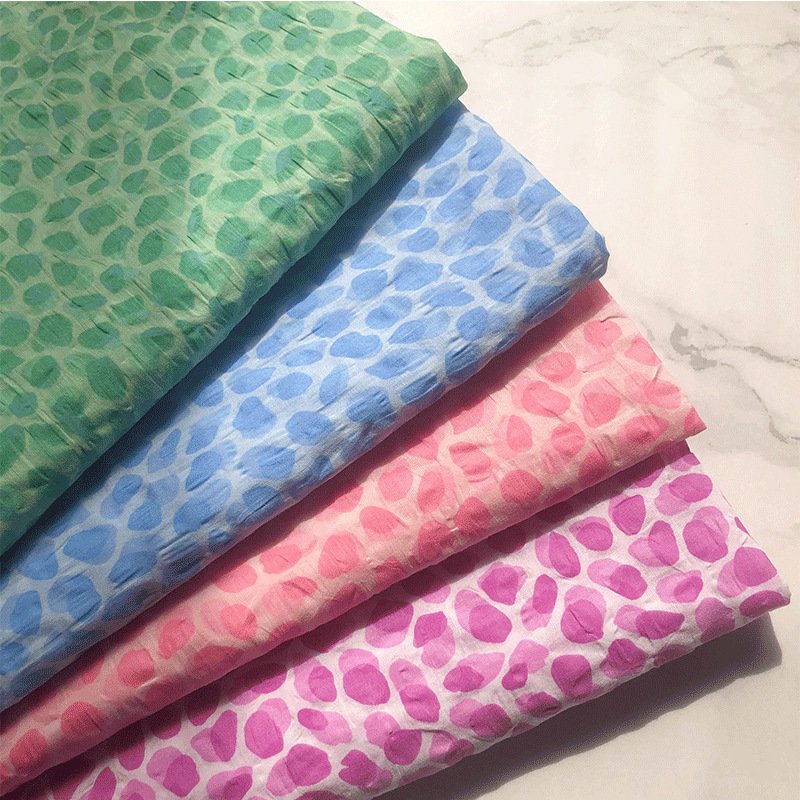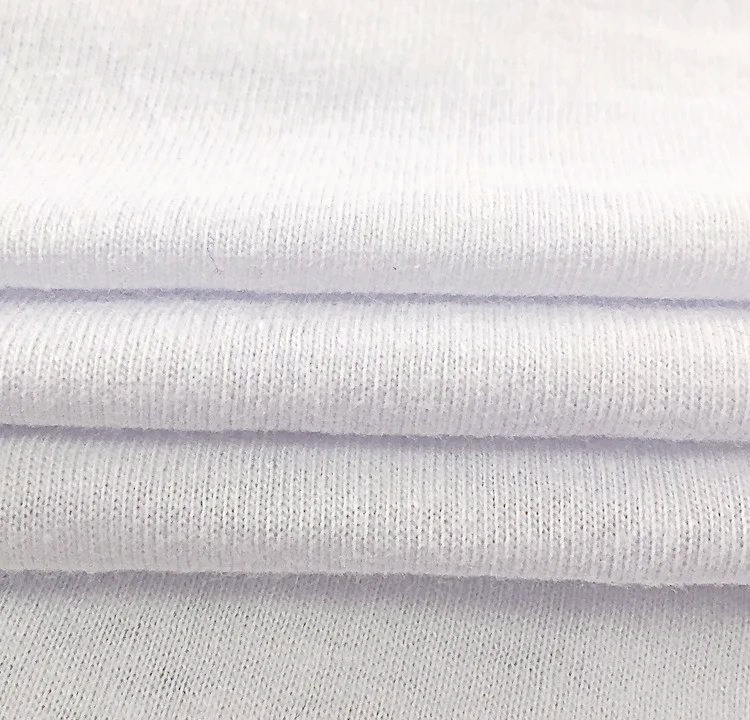
In today’s fast-shifting global textile market, cotton remains a cornerstone material for B2B fabric exports — but not all cotton fabrics are created equal. Export buyers, whether they’re fashion brands in Europe or medical textile importers in North America, are increasingly selective about the cotton they source. They demand not only high quality but also traceability, certifications, and supply chain reliability. The best types of cotton fabric for export are those that combine superior fiber quality, diverse weaves, eco-certifications (like GOTS or OEKO-TEX), and compliance with global trade standards. Popular export-grade cotton fabrics include poplin, twill, sateen, organic cotton, and high-thread-count plain weaves — each catering to distinct industries from apparel to home textiles.
But beyond technical specifications, successful exporters like SzoneierFabrics thrive by offering customization, low MOQs, fast sampling, and agile production tailored for foreign B2B clients. In this guide, we’ll dive deep into how different cotton fabrics dominate various export sectors, backed by real-world data and case studies that reveal why global buyers choose certain suppliers over others.
Let’s unpack these insights — and along the way, share some insider trade secrets that most exporters won’t tell you.
What Makes Cotton Fabric a Top Choice for Global Export Markets?
Cotton’s versatility, breathability, global recognition, and vast downstream demand across industries make it one of the world’s most heavily traded fabrics. Exporters favor cotton due to its wide consumer acceptance, biodegradability, flexible manufacturing, and compatibility with multiple certifications.
1. Universal Consumer Acceptance
Cotton is globally recognized for its comfort, softness, and skin-friendliness. Over 25 million tons of cotton are produced annually worldwide, with major consumer markets like the U.S., EU, and Japan driving demand for both apparel and technical applications.
2. Wide Application Spectrum
| Industry Sector | Key Cotton Fabric Applications | Export Growth Trends (2023-2025) |
|---|---|---|
| Apparel | T-shirts, jeans, shirts, undergarments | CAGR ~5% |
| Home Textiles | Bed sheets, towels, curtains | CAGR ~4.2% |
| Medical Textiles | Gauze, bandages, surgical fabrics | CAGR ~6.5% |
| Industrial Fabrics | Canvas, tarpaulins, workwear | CAGR ~3.7% |
| Eco-Luxury Segment | Organic, GOTS-certified fabrics | CAGR ~7.8% |
Source: Statista, Textile Outlook International
3. Trade-Friendly Material
Cotton enjoys widespread trade access thanks to multiple FTAs (Free Trade Agreements), preferential tariff codes (like HS Code 5208), and extensive port infrastructure in key producer countries (China, India, USA, Pakistan).
4. Biodegradable & Eco-Friendly
Compared to synthetic fibers, cotton’s biodegradability aligns with growing ESG (Environmental, Social, Governance) trends globally. Brands like H&M, Uniqlo, and Patagonia prioritize cotton for sustainable collections.
5. Customization Friendly
For exporters, cotton is easier to finish, dye, print, and customize — making it highly adaptable for ODM/OEM projects across diversified B2B client demands.
Which Types of Cotton Fabric Are Most In-Demand for Export?

The most in-demand cotton fabrics for export include poplin, twill, sateen, canvas, organic cotton, Pima cotton, Egyptian cotton, and specialty blends like cotton-spandex or cotton-polyester hybrids. Each serves specific B2B markets depending on quality needs, price point, and end-use application.
1. Overview Table of Export-Demand Cotton Types
| Cotton Fabric Type | Weave Type | Key Export Markets | Applications | Export Price Range (FOB USD/meter) |
|---|---|---|---|---|
| Poplin | Plain | USA, EU, Japan | Shirts, uniforms | $1.80 – $3.50 |
| Twill | Twill | USA, EU | Pants, jackets | $2.20 – $4.80 |
| Sateen | Satin | EU, Middle East | Bed linen, luxury sheets | $3.50 – $7.20 |
| Canvas | Plain | USA, Australia | Bags, workwear | $2.00 – $5.00 |
| Organic Cotton | Varies | EU, Scandinavia | Eco-apparel | $4.50 – $9.00 |
| Pima / Supima Cotton | Plain | USA, EU Luxury | Premium apparel | $6.00 – $12.00 |
| Egyptian Cotton | Plain | EU, Middle East | Luxury sheets, high-end shirts | $7.00 – $15.00 |
| Cotton Blends | Mixed | Global | Stretchwear, sportswear | $2.50 – $6.00 |
2. Poplin: The Export King of Shirts
Poplin remains the workhorse for mass shirt production. Brands like Uniqlo, Zara, and Brooks Brothers often specify poplin for business shirts due to its fine weave and smooth texture.
3. Twill: The Durable Export Favorite
Twill’s diagonal weave gives it durability, favored by B2B buyers of workwear, jeans, and uniforms. Levi’s, Dickies, and Carhartt source bulk twill exports for their global production hubs.
4. Organic Cotton: The ESG-Driven Export Boom
Demand for GOTS-certified organic cotton soared 18% YoY between 2022-2024. Scandinavian retailers like H&M Conscious and Ganni are pushing factories to secure traceable, pesticide-free organic cotton sources.
5. Premium Long-Staple Cottons: Luxury Exporters’ Arsenal
Egyptian and Pima cotton dominate high-thread-count bed linens and upscale shirting markets. Their longer fiber length provides superior softness and durability — a key selling point in luxury hospitality sectors.
6. Cotton Blends: The Fast-Fashion Enabler
Many buyers request cotton blended with spandex or polyester for improved stretch and wrinkle resistance. Fast fashion brands demand these blends for activewear and quick-turn fashion collections.
How Do Different Cotton Weaves (Poplin, Twill, Sateen, etc.) Affect Export Potential?
Different cotton weaves directly influence a fabric’s export suitability based on end-use, buyer preferences, and market trends. Poplin leads for shirts; twill for durable workwear; sateen for luxury home textiles; and canvas for bags and industrial applications. Exporters that master multiple weave options attract a broader B2B customer base globally.
1. Cotton Weaves Explained — Exporter’s Quick Reference
| Weave Type | Structure | Key Features | Top Export Applications | Export Suitability Rating |
|---|---|---|---|---|
| Poplin | Plain | Smooth, lightweight, crisp | Shirts, uniforms, summer wear | ★★★★★ |
| Twill | Diagonal | Durable, drapes well, wrinkle-resistant | Jeans, jackets, uniforms | ★★★★★ |
| Sateen | Satin-like | Lustrous, soft, high thread count | Luxury bedding, sheets, high-end shirts | ★★★★☆ |
| Canvas | Heavy plain | Tough, abrasion-resistant | Bags, tents, industrial covers | ★★★★☆ |
| Oxford | Basket | Textured, casual appearance | Casual shirts, sportswear | ★★★★☆ |
| Flannel | Brushed twill | Soft, warm, cozy | Pajamas, winter shirts, blankets | ★★★☆☆ |
2. Poplin’s Export Strength: Consistency & Volume
Poplin’s consistent structure makes it easy to finish, print, and dye — perfect for large-volume B2B buyers who require uniformity across multiple production runs. SzoneierFabrics supplies over 5 million meters of custom-dyed poplin annually to Southeast Asian uniform manufacturers catering to Japan’s workwear market.
3. Twill’s Dominance in Workwear Exports
Twill’s diagonal weave allows for high tensile strength — ideal for workwear and military contracts where durability is non-negotiable. US military uniforms mandate twill fabrics with breaking strength ≥ 350N in warp and weft directions. Exporters meeting this standard unlock lucrative government contracts.
4. Sateen’s Luxury Edge for Western Buyers
Sateen’s smooth handfeel attracts premium hotel chains and home textile brands in Europe and the Middle East. Luxury hotel suppliers in the UAE often demand 400+ thread count sateen from Egyptian cotton mills, willing to pay 25-40% premium FOB prices for certified long-staple fabrics.
5. Canvas: The Industrial & Fashion Crossover
Canvas exports serve both heavy-duty industrial clients (tents, sails, tarps) and fashion houses (tote bags, casual footwear). Canvas blended with 10-20% polyester improves UV resistance — highly requested by Australian outdoor brands.
What Export Markets Prefer Organic, GOTS, or OEKO-TEX Certified Cotton?

European Union, North America, Japan, and Scandinavia are top markets demanding certified organic and OEKO-TEX-compliant cotton. Certifications ensure eco-safety, traceability, and legal compliance for B2B buyers, especially in fashion, babywear, and home textiles sectors.
1. Export Market Certification Preferences
| Export Market | Preferred Certifications | Application Sectors |
|---|---|---|
| European Union | GOTS, OEKO-TEX 100, BCI | Apparel, bedding, babywear |
| USA | USDA Organic, GOTS, OEKO-TEX | Fashion, babywear, medical textiles |
| Scandinavia | GOTS, OEKO-TEX 100 | Eco-luxury brands, hospitality |
| Japan | OEKO-TEX 100, JIS standards | Uniforms, medical, babywear |
| Australia | OEKO-TEX, GOTS | Outdoor gear, baby products |
2. Why Global Buyers Demand Certifications
- Traceability: Fashion giants like Patagonia and Stella McCartney require full farm-to-factory chain of custody.
- Retail Regulations: EU’s Eco-Design Directive and Germany’s Supply Chain Act mandate certified sourcing.
- Consumer Preference: Millennials & Gen Z consumers prioritize certified, sustainable goods.
- Legal Compliance: Avoids import bans linked to forced labor concerns (e.g., US Uyghur Forced Labor Prevention Act).
3. GOTS vs. OEKO-TEX: Exporter’s Decision Guide
| Feature | GOTS (Global Organic Textile Standard) | OEKO-TEX Standard 100 |
|---|---|---|
| Coverage | Organic fiber + full processing chain | Final product chemical safety |
| Organic % | ≥70% organic content | No organic requirement |
| Complexity | High (strict audits, traceability) | Moderate (lab-tested end product) |
| Buyer Type | Premium fashion, eco-luxury | Mass retail, children’s wear |
| Cost Impact | +10-20% cost due to compliance | +5-10% depending on scope |
4. Real Export Case Study — GOTS Drives EU Demand
In 2023, a European client (eco-luxury babywear brand) placed a 1.2 million USD contract for GOTS-certified organic interlock fabric. Their top priority? Full organic certification plus zero-AZO dye usage to comply with Germany’s strict child safety import laws.
5. Exporter Tip: Certifications as Competitive Advantage
While certifications add cost, they’re often non-negotiable entry tickets into high-margin markets. Exporters who can provide full certification dossiers can easily justify higher FOB prices.
How Is Cotton Quality Graded for International Trade?
Cotton quality for export is graded based on fiber length, strength, micronaire (fineness), color, and trash content. Exporters often follow U.S. Cotton Standards or ICA Bremen norms to ensure international buyers receive consistent, verifiable quality.
1. Key Cotton Grading Parameters
| Grading Factor | Description | Impact on Export Quality |
|---|---|---|
| Fiber Length | Staple length in inches or mm | Longer = softer, stronger fabrics |
| Strength | Breaking strength (g/tex) | Higher = better durability |
| Micronaire | Fiber fineness and maturity index | Ideal range 3.7–4.2 |
| Color Grade | Brightness and yellowness index | Higher brightness preferred |
| Trash Content | Non-lint matter like leaves, stems | Lower trash = higher price |
| Moisture Content | Ideal 7-8% for stable export handling | Too high = mold risks |
2. Global Grading Systems in Use
| System | Commonly Used In | Standard Reference |
|---|---|---|
| USDA HVI System | USA, global trade | Universal standard |
| ICA Bremen | EU, luxury trade | Premium benchmark |
| China GB/T Code | Domestic & regional trade | GB1103-2012 |
3. Why Grading Matters for Export Contracts
Most large-scale B2B buyers issue technical data sheets specifying minimum acceptable fiber properties. If you fail to meet grading specs, entire shipments risk rejection, legal claims, or financial penalties.
Example: A U.S. importer may specify:
- Fiber Length ≥ 1-1/8 inch (28.58mm)
- Micronaire 3.8–4.5
- Strength ≥ 28 g/tex
- Trash ≤ 2%
SzoneierFabrics regularly provides such lab-tested certificates to ensure smooth customs clearance and minimize buyer disputes.
4. Exporter Tip: Invest in HVI Testing
High Volume Instrument (HVI) testing reports are increasingly required by professional buyers. Partnering with accredited labs (like SGS, Bureau Veritas) provides your export clients confidence in your QC system.
What MOQ, Pricing, and Compliance Factors Matter Most to B2B Cotton Buyers?

B2B cotton buyers prioritize flexible MOQs, stable pricing, rapid sampling, and full regulatory compliance. Factories offering low MOQs (300–1000 meters), transparent quotes, and quick pre-production sampling gain a competitive edge in international trade.
1. MOQ Expectations by Buyer Type
| Buyer Type | Typical MOQ Expectation | Reasoning |
|---|---|---|
| Small Brands | 300–500 meters/style | Test market runs |
| Medium Brands | 500–2000 meters/style | Regional distribution |
| Large Retailers | 5000–20000 meters/style | Full production scaling |
| Trading Companies | Highly negotiable | Client-dependent |
We support low MOQs starting from 300 meters with free design assistance — ideal for niche brands entering new product lines.
2. Pricing Factors for Export
| Cost Element | % of FOB Price Impact | Key Notes |
|---|---|---|
| Raw Cotton Fiber | 40–50% | Linked to global cotton index (e.g. Cotlook A Index) |
| Weaving/Knitting | 15–20% | Efficiency impacts yield |
| Dyeing & Finishing | 10–15% | Eco-compliance increases cost |
| Certification Fees | 5–10% | GOTS, OEKO-TEX costs |
| Logistics | 5–10% | Port fees, container costs |
| Margin | 5–10% | Negotiable based on volume |
Real Price Example (FOB USD/meter):
- Poplin (standard): $2.20–$3.50
- Organic Interlock: $5.00–$7.50
- Egyptian Sateen 400TC: $7.50–$14.00
3. Compliance Issues B2B Buyers Check
- Chemical Safety: Azo dyes, formaldehyde levels (restricted in EU, US, Japan).
- Labor Compliance: BSCI, SMETA, WRAP audits requested by Western buyers.
- Traceability: Chain-of-custody documentation for organic claims.
- Logistics Readiness: ISF filing, proper HS coding, export declarations.
4. Case Study — Why Fast Sampling Wins Orders
One Australian brand approached SzoneierFabrics in 2024 seeking a rapid prototype of organic cotton beachwear. We delivered fully finished samples within 7 business days — ahead of competitors quoting 3–4 weeks. The client subsequently placed a $250K initial PO with quarterly repeat orders.
5. Exporter Tip: Build Flexibility into Pricing Models
Many buyers expect volume-based discounts or price locks for long-term contracts. Offering a transparent pricing matrix builds buyer trust:
| Volume (Meters) | FOB Discount Offered |
|---|---|
| 500–1000 | Base Price |
| 1000–5000 | -3% FOB |
| 5000–10000 | -5% FOB |
| 10000+ | Negotiable |
How Do Global Trade Regulations and Tariffs Impact Cotton Fabric Export?
Global trade regulations, tariffs, and preferential agreements directly affect cotton fabric export profitability and buyer sourcing decisions. Exporters who understand trade laws, HS codes, anti-dumping duties, and utilize Free Trade Agreements (FTAs) gain stronger market access and price competitiveness.
1. Tariff Scenarios Across Export Destinations
| Destination Market | Typical Import Duty for Cotton Fabric | Trade Agreement Opportunities |
|---|---|---|
| USA | 8–12% (MFN), but 0% under USMCA, AGOA | USMCA, AGOA, CAFTA-DR |
| EU | 8% average MFN, but 0% for GSP+ nations | GSP, GSP+, EPA |
| Japan | 7–10% standard, but often reduced via EPA | EU-Japan EPA, CPTPP |
| Australia | 5% standard, 0% under FTAs | China-Australia FTA (ChAFTA) |
| Middle East (UAE, Saudi) | 5% average MFN | GCC Trade Zone |
SzoneierFabrics often assists B2B clients by pre-calculating landed costs inclusive of applicable tariffs, using official HS Code 5208 for woven cotton fabric or HS Code 6006 for knitted varieties.
2. Non-Tariff Barriers to Watch
- Origin Declarations: Rules of Origin (ROO) compliance essential for duty-free status.
- Technical Barriers to Trade (TBT): EU’s REACH regulations and US CPSIA safety standards.
- Sanctions & Restrictions: U.S. bans on Xinjiang-origin cotton impact global sourcing behavior.
- Port Delays & Documentation: Exporters must prepare precise paperwork—commercial invoices, packing lists, COO certificates, GSP forms.
3. Case Study — EU GSP+ Benefits for Asian Exporters
An Asian client of SzoneierFabrics exporting GOTS-certified sateen bedding to Germany enjoys full EU GSP+ duty exemptions, saving 8% tariffs. On a $500,000 order, tariff savings exceed $40,000 — giving both buyer and seller improved margins.
4. Exporter Tip: Stay Updated via Global Trade Portals
- World Trade Organization (WTO)
- ITC Market Access Map
- US International Trade Commission
- EU Access2Markets Portal
Staying current helps prevent costly trade compliance mistakes.
What Are the Key Trends Driving Cotton Fabric Demand in 2025 and Beyond?

Major trends driving cotton fabric export in 2025 include the rise of traceable organic cotton, digital printing technologies, recycled cotton, fast fashion nearshoring, ESG compliance, and advanced functional cotton blends for medical and technical textiles.
1. Key Export Demand Trends for 2025
| Trend | Description | Export Impact |
|---|---|---|
| Organic Cotton Boom | Surge in certified demand | GOTS, BCI sourcing priority |
| Recycled Cotton Growth | Circular economy adoption | Blend with virgin cotton |
| Digital Printing | Small-batch, custom designs | Lower MOQ opportunities |
| ESG Pressure | Brands demand full transparency | Compliance drives competitiveness |
| Functional Finishing | Anti-bacterial, UV, moisture-wicking | Medical & sportswear sector growth |
| Nearshoring Surge | Shift closer to Western buyers | Quicker lead times preferred |
2. Organic Cotton — Global Forecast
- Organic cotton production grew 37% from 2021–2023 (Textile Exchange data).
- By 2025, GOTS-certified fabric demand is projected to reach 10 million metric tons globally.
- Top B2B buyers: Patagonia, H&M, Inditex, Next, C&A.
3. Recycled Cotton — Sustainability Meets Cost
Recycled cotton blends (20-50%) appeal to budget-conscious brands balancing sustainability with affordability.
Example: U.S. brand Everlane uses recycled cotton in denim exports while maintaining competitive FOB pricing ~10-15% below full-organic.
4. Digital Printing Disrupts Export Dynamics
- Smaller MOQ flexibility (50–200 meters)
- Fast prototyping for niche collections
- Low water consumption vs. traditional dyeing
We’ve invested in digital reactive printers, capable of producing vibrant, washable cotton prints for clients in Europe and North America, with turnaround times as fast as 5 days.
5. ESG & Traceability as Buyer Mandates
Buyers increasingly request:
- Blockchain-backed cotton traceability
- Water consumption data (LCA reports)
- Labor audit transparency (BSCI, SA8000)
An EU bedding client requires full supply chain traceability reports to comply with Germany’s Supply Chain Due Diligence Act (LkSG), effective 2023.
6. Nearshoring & Regional Sourcing Shift
- U.S. buyers shift partial sourcing to Mexico, Central America (CAFTA-DR).
- EU brands seek Turkish, North African suppliers for speed.
- Asian mills (like SzoneierFabrics) who offer hybrid models — combining competitive pricing with fast logistics — remain highly competitive globally.
Partner with SzoneierFabrics for Tailored Cotton Fabric Export Solutions
At SzoneierFabrics, we don’t just manufacture cotton fabrics — we engineer export-ready solutions customized for your brand’s success. With:
- Diverse weave capabilities (poplin, twill, sateen, canvas & more)
- GOTS, OEKO-TEX, BSCI, and SMETA certifications
- Low MOQ starting from 300 meters
- Fast sampling (as little as 7 days)
- Advanced digital printing services
- 100% transparent compliance documentation
- Full trade documentation support for global shipping
We’ve successfully partnered with clients from small emerging brands to top-tier luxury houses across North America, Europe, Australia, and Japan.
If you’re sourcing premium cotton fabrics for your business, contact us today for a free consultation, customized quote, and complimentary sample evaluation.

